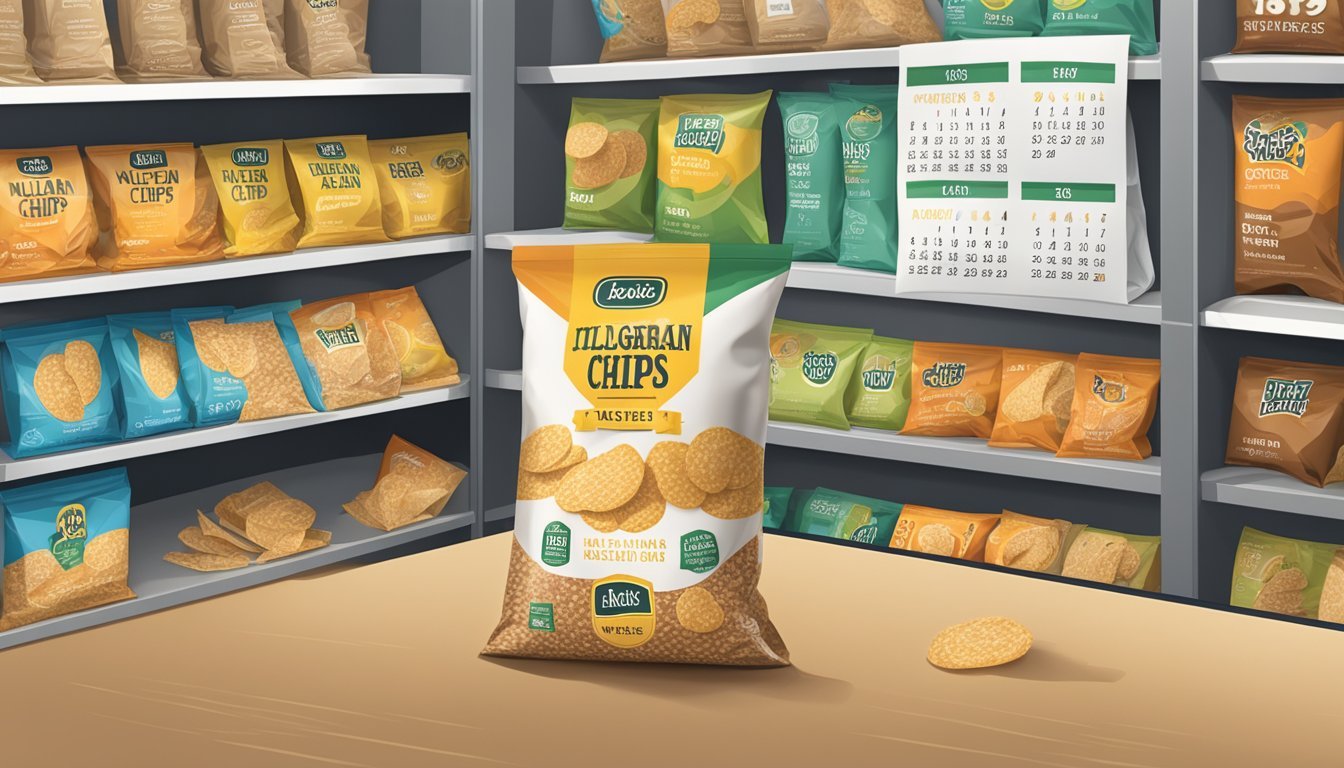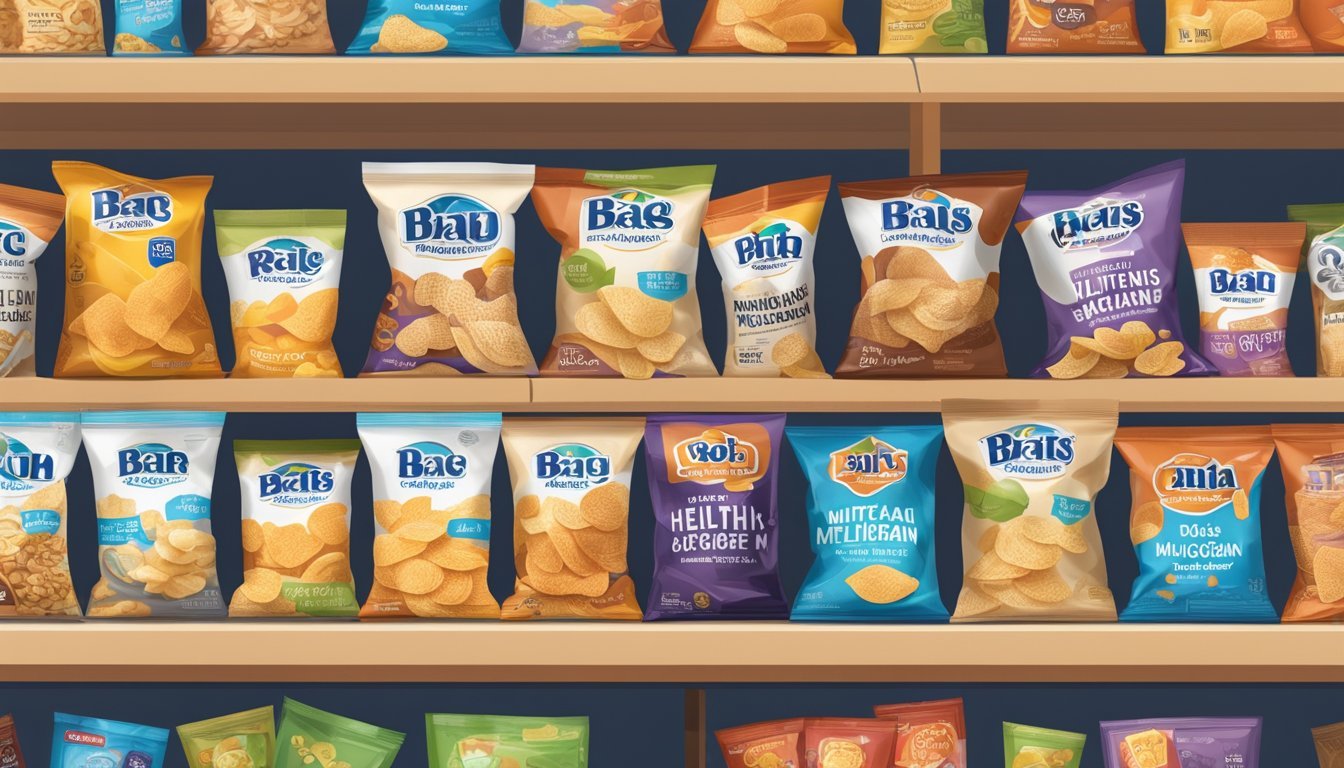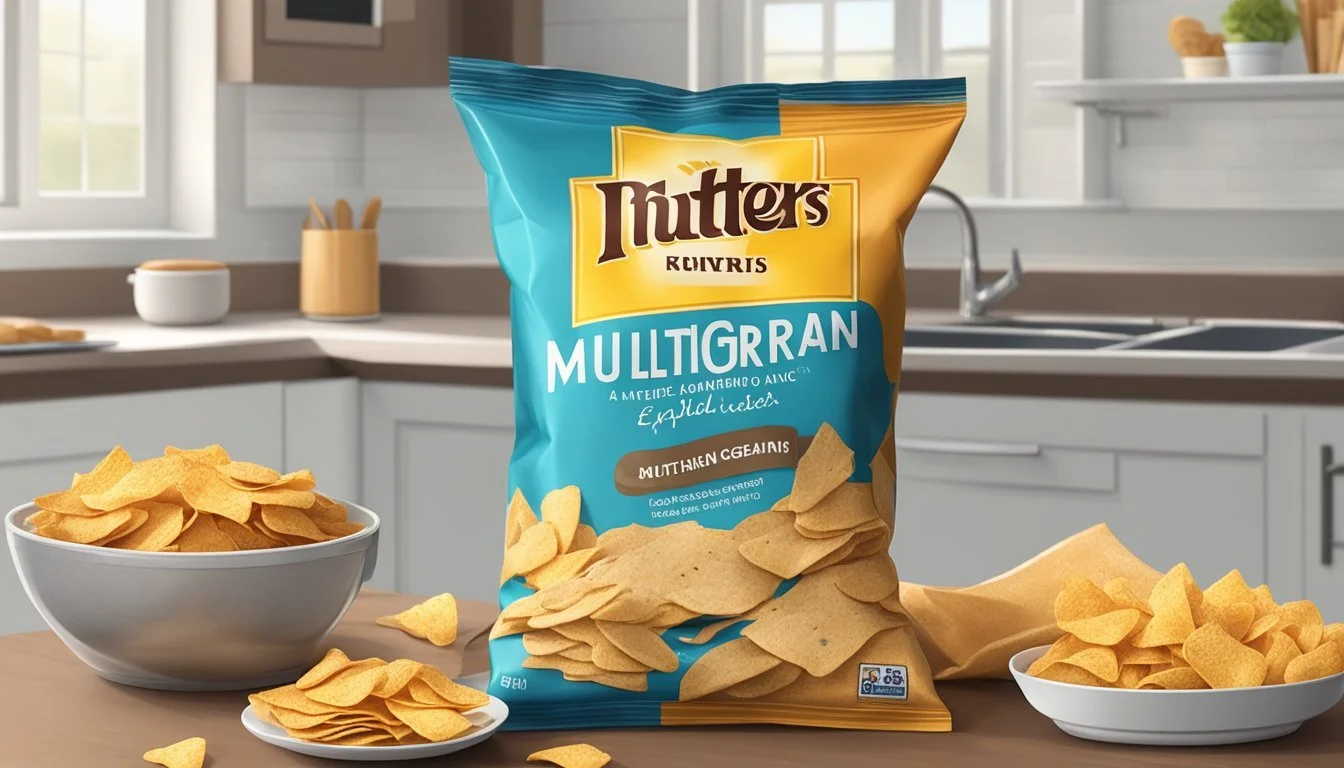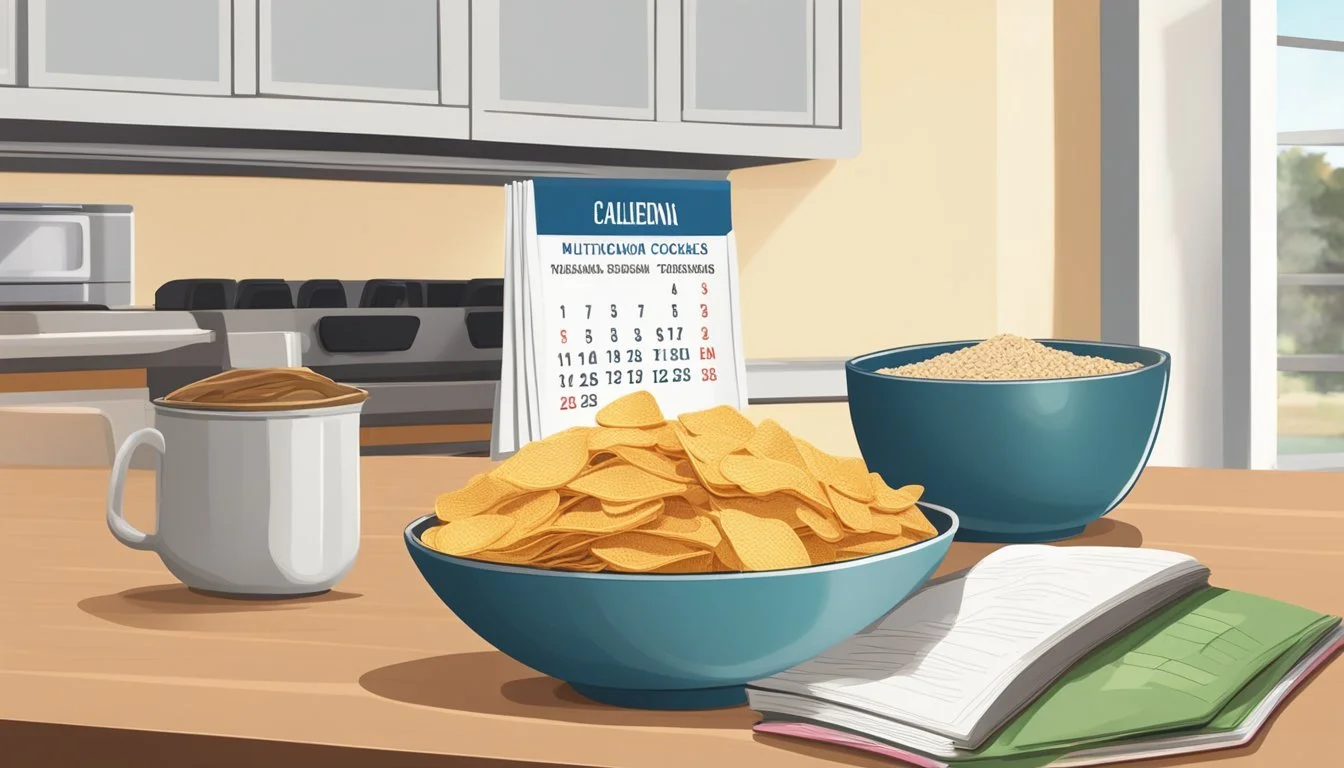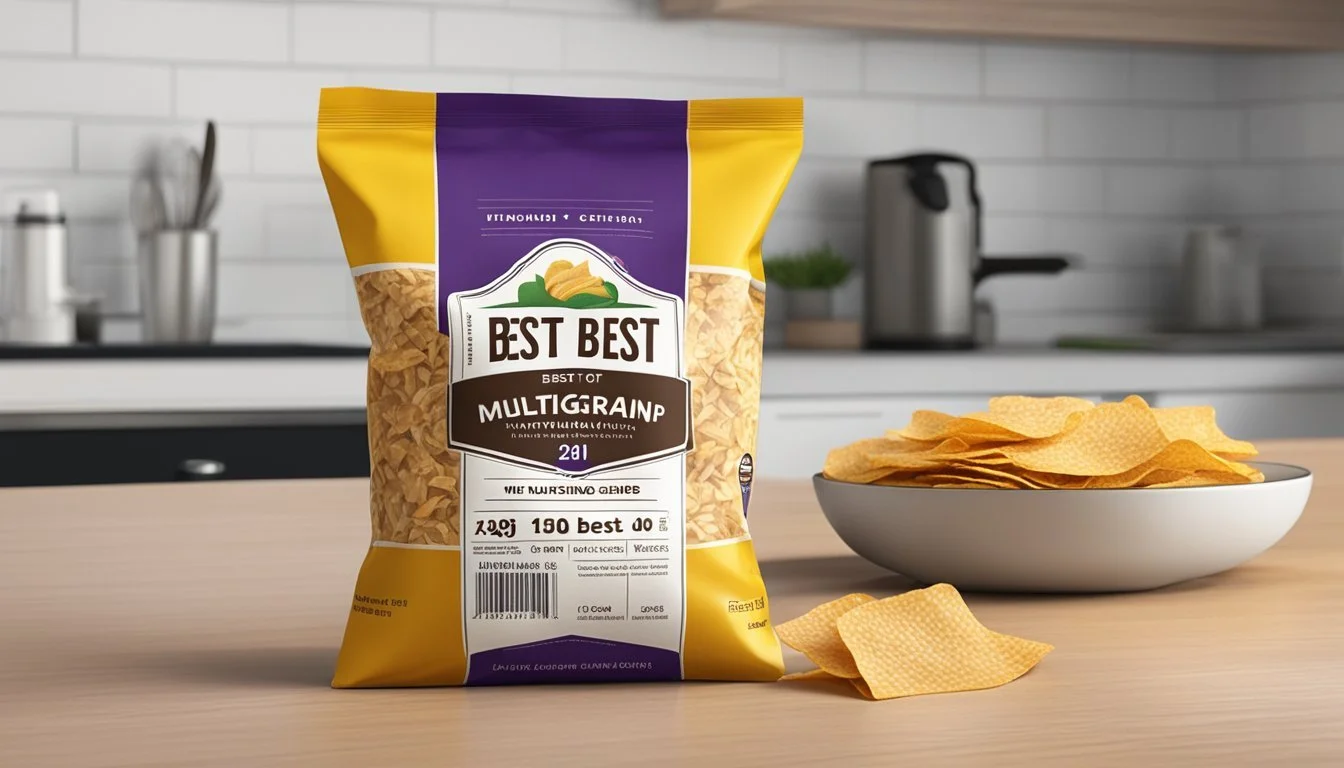How Long Do Multigrain Chips Last
Shelf Life Explained
When selecting multigrain chips as a healthier snack option, consumers often look for whole grain ingredients listed at the top of the food label. Whole grains are a preferred choice thanks to their nutritional benefits, including fiber and essential nutrients. However, like all packaged foods, multigrain chips have a finite shelf life, and understanding how long they last can help maintain their freshness and nutritional value.
Multigrain chips, properly stored in an unopened bag, typically remain fresh until the printed "best by" date, although this is not an expiration date. Once opened, chips should ideally be consumed within a week or two to enjoy their optimal quality. Chips past their "best by" date may still be safe to eat, but consumers might notice a decline in taste and texture as the oils in the chips can break down and become rancid over time.
Understanding Multigrain Chips
In evaluating multigrain chips, one must consider their varied composition along with the nutritional benefits they may offer. These chips often combine different types of grains and seeds to create a complex snacking option.
Composition and Ingredients
Multigrain chips are composed of a variety of grains such as wheat, rye, oats, barley, brown rice, and quinoa. These grains may be present in whole form, which provides a source of whole grains in the diet. In addition to these grains, seeds like flax and sunflower seeds are sometimes incorporated for additional texture and nutritional value. The ingredients list on a package of multigrain chips may also contain nuts, various types of oil, salt, sugar, and non-genetically modified organisms (non-GMO) ingredients when labeled accordingly. Some brands may also include organic ingredients, enhancing their appeal to health-conscious consumers.
Nutritional Profile
The nutritional profile of multigrain chips can be quite diverse, offering a range of vitamins, minerals, and dietary fiber. These nutrients play vital roles in maintaining bodily functions and promoting digestive health.
Key nutritional elements include:
Fiber: Aids in digestion and can contribute to a feeling of fullness.
Vitamins: B vitamins are commonly present due to the various whole grains.
Minerals: Certain multigrain chips may offer iron, magnesium, and other essential minerals.
The actual nutritional value will differ between brands and formulations, and thus it is essential to read the ingredients list and nutrition facts panel to determine the specific benefits that a particular brand of multigrain chips may provide. It's also necessary to look out for additives that might be present, which could impact the overall healthiness of the chips.
Optimal Storage Conditions
Proper storage significantly extends the shelf life of multigrain chips. Maintaining a suitable temperature and limiting humidity are vital factors, while an ideal packaging approach prevents staleness and flavor loss.
Temperature and Humidity Control
To retain the crispness and taste of multigrain chips, it's imperative to store them in a cool, dry area. Chips are best preserved at room temperature, typically between 68°F and 72°F (20°C to 22°C). High humidity levels can lead to a damp texture, so a low-humidity environment is crucial to prevent sogginess.
Packaging and Containers
Once opened, multigrain chips should be kept in packaging that restricts air flow to prevent them from becoming stale. Utilizing an airtight container is an ideal solution. If the original packaging is used, one must ensure to remove excess air and securely clip the bag closed. Chips stored in a resealable bag or container should be checked for any potential rips or tears to avoid unwanted air exposure.
Shelf Life Determination
Determining the shelf life of multigrain chips involves understanding their expiration or best-by dates and monitoring quality indicators over time to ensure they retain their peak quality.
Expiration and Best-by Dates
When assessing the shelf life of multigrain chips, it's important to distinguish between various dates on food packaging. An expiration date indicates when the item may no longer be safe to eat, while a best-by date refers to the time period where the product is at its best quality in terms of flavor and texture. A use by date is similar to an expiration date and focuses on safety rather than quality after that date. In contrast, sell-by dates guide retailers on how long to display a product for sale, ensuring that consumers enjoy it at its freshest. Multigrain chips typically have a best-by date, which signifies the time frame they will likely maintain peak quality.
Quality Indicators Over Time
As time passes, even within the range before the best-by date, multigrain chips can experience changes in freshness that serve as quality indicators. The crispness and flavor of multigrain chips might diminish due to exposure to air, which leads to staleness. Consumers can gauge the ongoing freshness of the chips by examining their texture and tasting them to assess whether the flavors have started to fade or if the oils have begun to turn rancid. To maintain the best quality for as long as possible, it's imperative to store multigrain chips properly in airtight containers, away from direct sunlight and heat.
Signs of Spoilage and Quality Loss
When assessing the quality of multigrain chips, it is important to look for signs such as changes in appearance, texture, and odor. These indicators can help determine if the chips are no longer at their best quality or if they have potentially become unsafe to eat.
Visual and Textural Changes
Multigrain chips that have begun to spoil often display visual changes, including a darker coloration or the presence of mold. Mold, if it appears, is a clear sign of spoilage and the chips should not be consumed. Texture changes are also telling; chips that have absorbed moisture will lose their crunchiness, becoming stale or soggy. A discernible loss of texture suggests that the chips have been exposed to air for too long or that they have not been stored properly.
Odor and Taste Assessment
Before tasting, a simple smell test can reveal off odors that indicate spoilage or the onset of oxidation in the fats used to make the chips. An off odor is a robust sign that the chips are past their prime. If a smell test yields no bad odors, a small taste can be used to assess quality. Expired chips may have an off taste or lack their original flavor and pop; this often suggests oxidation or that the chips have absorbed other flavors or odors from their surroundings.
Spoiled chips might have a rancid taste, a sign of oxidation, and should not be consumed.
Health Considerations
When considering the health aspects of multigrain chips, it is important to evaluate both food safety and the nutritional profile. Shelf life affects food safety while the ingredients impact nutritional concerns.
Food Safety and Spoilage
Multigrain chips, like any processed food, are susceptible to spoilage, which can be indicated by changes in texture, taste, and odor. Food safety is paramount; consuming spoiled chips might lead to foodborne illnesses. Potential symptoms of bacteria-induced sickness include nausea, vomiting, diarrhea, fever, and chills. It is crucial to store chips properly and consume them before the expiry date to reduce health risks.
Nutrition and Dietary Concerns
The nutrition of multigrain chips can vary by brand and recipe. Typically, they contain a combination of grains which could offer more fiber and nutrients than single-grain alternatives. However, they can also contain preservatives and higher levels of sodium. Those with allergies or specific dietary needs should check the labels carefully. Improper consumption, like eating too many chips, even if they are labeled as healthy, can lead to adverse health effects such as stomach cramps.
Extending Freshness and Usability
Maintaining the freshness of multigrain chips involves proper packaging and storage techniques. By focusing attention on how the product is sealed and stored, one can extend the usability of the chips beyond the printed use-by date while keeping them safe for consumption.
Proper Sealing and Handling
Multigrain chips remain fresh when they are kept in airtight conditions. Once opened, they should be resealed using a bag clip or a sealing device to prevent exposure to air which can accelerate staleness. Subsequent handling should minimize the time the package remains open to avoid moisture from the air softening the chips.
Alternative Storage Methods
Freezing is a lesser-known but effective method for extending the shelf life of multigrain chips. To freeze, chips should be placed in an airtight container or a heavy-duty freezer bag. However, it is vital to ensure chips come to room temperature before opening post-freezing to prevent condensation from affecting their texture and crispness. While freezing can extend freshness, it's recommended to first check the package for any storage advisories provided by the manufacturer.
Culinary and Snacking Tips
Multigrain chips, known for their hearty texture and variety of flavors, offer a versatile snacking option. They combine grains like brown rice, flax, and quinoa to provide a distinct crunch and taste profile that can elevate any culinary experience.
Serving Suggestions
One can serve multigrain chips as a standalone snack or as an accompaniment to dips and salsas to enhance their flavor. They pair well with:
Guacamole: The creamy texture of avocado complements the hearty crunch of the chips.
Hummus: Chickpeas blended into hummus offer a smooth contrast to the textured chips.
Cheese dips: A melty cheese dip can add a rich, savory layer to the chip's nutty flavors.
Salsa: The fresh, often spicy, elements of salsa provide a zesty taste that balances the earthiness of multigrain chips.
For added variety, opt for multigrain chips flavored with herbs or spices, such as black pepper or rosemary. It can elevate any plain dip with an aromatic twist.
Creative Use of Stale Chips
When multigrain chips lose their crunch over time, they can still be repurposed in the kitchen. Here are inventive ways to give them a new life:
Breading for chicken or fish: Crushed stale chips can be used as a flavorful coating for proteins, adding crunch and seasoned taste to baked or fried dishes.
Casserole topping: Sprinkle crushed chips atop a casserole for a baked-in crunchy texture.
As an ingredient in trail mix: Combine bits of stale multigrain chips with nuts, seeds, and dried fruits (What wine goes well with dried fruits?) for a crunchy snack mix.
Addition to soup or salad: For an added texture, one can toss them into soups or salads, much like croutons (how long do croutons last?), just before serving.
Through these methods, not only is food waste reduced, but also the full potential of multigrain chips as a culinary ingredient is realized.
Consumer Insights
In the realm of multigrain chips, consumer preferences and packaging innovations play a pivotal role in the product's lifecycle and brand competitiveness.
Brand Comparisons and Preferences
Consumers show distinct preferences when it comes to multigrain chip brands, with choices often influenced by the perceived health benefits and taste profiles. Brands like Late July have positioned themselves as a desirable choice for health-conscious customers by emphasizing their nutritional value. However, consumer perception is also shaped by the brand's flavor offerings, with a variety driving consumer interest.
The research indicates that consumers lean towards brands that blend taste with health benefits, moving away from those that may have a stale or bland flavor often associated with health-focused products. This taste barrier is declining as consumers now, more than ever, consider the flavor of whole grains a benefit rather than a deterrent.
Packaging Innovations
Packaging plays a crucial role in the longevity and appeal of multigrain chips. Innovative packaging solutions are implemented to extend shelf life while maintaining product quality. For instance, an unopened package of tortilla chips, when properly stored, will generally maintain best quality for about 2 to 3 months after the date on the package, as indicated by shelf stability studies.
Consumers favor packaging that offers both functionality and sustainability. Brands that invest in resealable packages or use materials that extend freshness are more likely to resonate with today's environmentally conscious consumer. The integration of clear labeling that communicates the health attributes of the product, innovative designs that reduce the carbon footprint, and the use of materials that protect the chips from moisture and air exposure are front and center in the consumer's preference for multigrain chip products.



